The Sephardim and Conversos in Spain
In medieval Spain acted as conduits and go-betweens between the Christian and Muslim communities much as the dwindling Middle East Christians today. Forced conversions were common especially after the collapse of the Caliphate of Cordoba at the end of the 11th century. However as we know a violent imposition of a religion is contrary to reason and thereby contrary to God's nature as Benedict XVI aptly put in his controversial Regensburg address. In the case of the Sephardim this meant that forced conversion were never considered valid. This same view was voiced by Maimonides who may have undergone such a conversion as a young man before his family left for North Africa and Egypt. Therefore it was a problem when in 1391 and after, Jews in Christian lands were also subject to forced conversions. This led not to the absorption of the conversos but the creation of a community neither Jewish nor Christian. Since those of old Christian stalk: Old Christians consider them guilty of crypo-jewish practices. Therefore the major impetus behind the 1492 expulsion of the Sephardim was to keep them from presumably influencing the converso community which included many of their relatives. As time went on while many conversos lost all concept of their ancestry the prejudice of la limpieza de sangre- the purity of blood - barred peope with Jewish or Moorish blood from many posts. These slights only seemed to heighten their self-consciousness as a community apart. In fact some actually emigrated to Holland and the New World and reverted back to Judaism such as was the case of Miguel Cardozo, born in Madrid in 1626 a leader of the Sabbateans, a Jewish sect that proclaimed the false messiah Sabbatai Zevi.
In intellectual life many people of converso stock were important in that tradition of literacy was prevalent in their families and therefore they embraced much of the devotio moderna and Renaissance thought particularly that of Erasmus. This so called Erasmism is not a straight aping of the Rotterdam scholar but a purely Peninsular phenomenon peculiar to Spain. Prominent amogn them where the Cardinal Cisneros, the Brothers Valdés, Luis Vives, Andrés Laguna etc. It's not that the conversos were exclusively of this tendency but their presence is significant since this line of thought was attractive since it was more egalitarian and offered an escape from prejudice. By sharing in Christ's Humanitas, we realize the dignity and vocation of man no matter his birth or background. To echo St. Paul, in Christ their is no l0nger Gentile or Jew. This Erasmist phase marked the First Renaissance, the Second being colored largely by the Council of Trent.
In this mold are Santa Teresa de Jesús, San Juan de la Cruz, and Fray Luis de León.
Santa Teresa is more along the lines of the "iluminados" or "monjas iluminadas" mixed with the Catholic Reformatory spirit. While Fray Luis, an Agustinian, combines the Erasmist and Humanistic impulse in his Christo-centrism and textual exegesis and concern for the original Biblical languages, with Trentan themes such as Patristics, Homilectics and Moral Theology. However demonizes the Council of Trent should read the Declaration on Justification and appreciate it more fully. As this document is a masterpiece of theology that thoroughly engages the theses of the Protestant Reformers and articulates a Catholic response, which in itself is a development of doctrine in that the deposit of faith had not been challenged in such a way before.
Fray Luis is unique in how he combines scriptural exegesis of the Hebrew Bible with his roots. Doubtlessly he was barely aware of them as he had some converso blood on his mother's side. Yet he was fully Catholic in his work and thought as all but a tiny minority of conversos were. However, his trials and tribulations at the hands of a Spanish translations of the Song of Songs from Hebrew afforded him no end of attacks on this score, that he preferred the interpretation of the Rabbis over the Fathers of the Church. However the addition of the Hebrew text, set by a scholar in France (Vatable), included some commentaries by Ibn Ezra and others.
A year or so ago I was searching through the OSU library and found an Old Spanish religious debate between a Jew and a Jewish convert to Christianity which quoted the Talmud at length. These debates were common and the Talmud was used to defend Christianity against Judaism. This was the background situation that Fray Luis was heir to in that Jewish converts were some of the worst Jew-baiters. These included Pedro Alphonsus, and others who had a public debates with Jewish religious leaders like the public disputation with great Catalan rabbi Nahmanides in the 14th century. Concerning what Christians call the Old Testament the Rabbinic sages cited in the Talmud are helpful in understanding the Jewish Scriptures. Indeed, they often agree with the Church's traditional interpretation. Take for instance the Song of Songs. In the interpretation of this book the Love Song is seen as an allegory of the House of Israel and God. This is more in line with the Church's teaching about Christ and His Bride the Church.
Late Medieval Jewish scholars would move away from the Rabbinic Sages, offering more innovative interpretation such as the relationship between the individual soul and God offered by Maimonides. This tact is further elaborated in Gersonides (a Provençal Rabbi in the 14th century) who sees the book as an extended allegory of Aristotelian Psychology involving the Material and the Active Intellect.
More importantly, the plight of Fray Luis and others like him shed light on the Jewish Question as it can be posed in Christian Circles, by once more positiong Jewishness at the root of Christianity. This has been one of the definite coups of the 20th century, a small but precious thing, in the barrage of genocide and death.
For truly, the Catholic Church contains Judaism within it from the Liturgy of the Word- the Sinagogue, to the Eucharistic Sacrifice in the Holy of Holies.
If the Jew is important it is that he reveals mankind to man in Jesus Christ. And as a community they represent mankind in microcosm, wandering the Earth in search of a Heavenly home, the New Jerusalem. Yehuda Ha-Levi a prominent courtier at the Height of the Caliphate at Cordoba said it best: "My heart is in the east and I in the uttermost west."
A Longing to Return to the Land of Israel
A poem by Yehudah ha-Levi
My heart is in the east, and I in the uttermost west.
How can I find savor in food? How shall it be sweet to me?
How shall I render my vows and my bonds, while yet
Zion lieth beneath the fetter of Edom, and I in Arab chains?
A light thing would it seem to me
to leave all the good things of Spain -
Seeing how precious in mine eyes
to behold the dust of the desolate sanctuary.
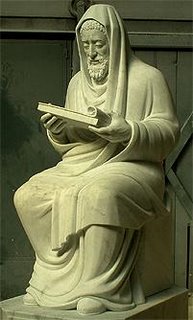

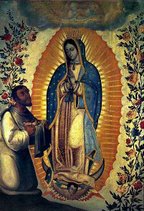
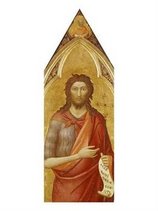
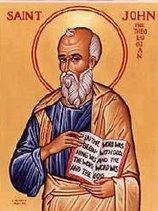

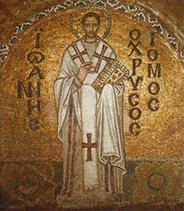
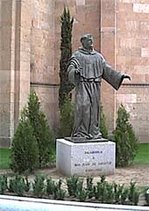

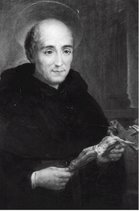
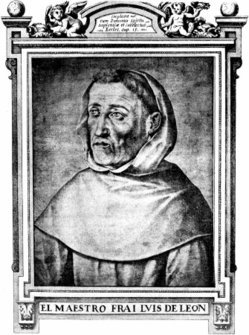
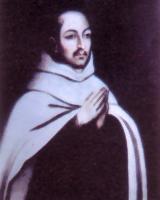


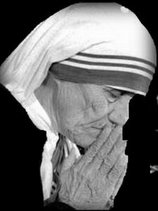
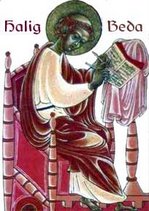
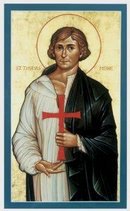
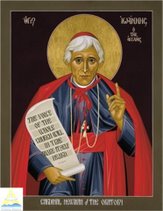




No comments:
Post a Comment